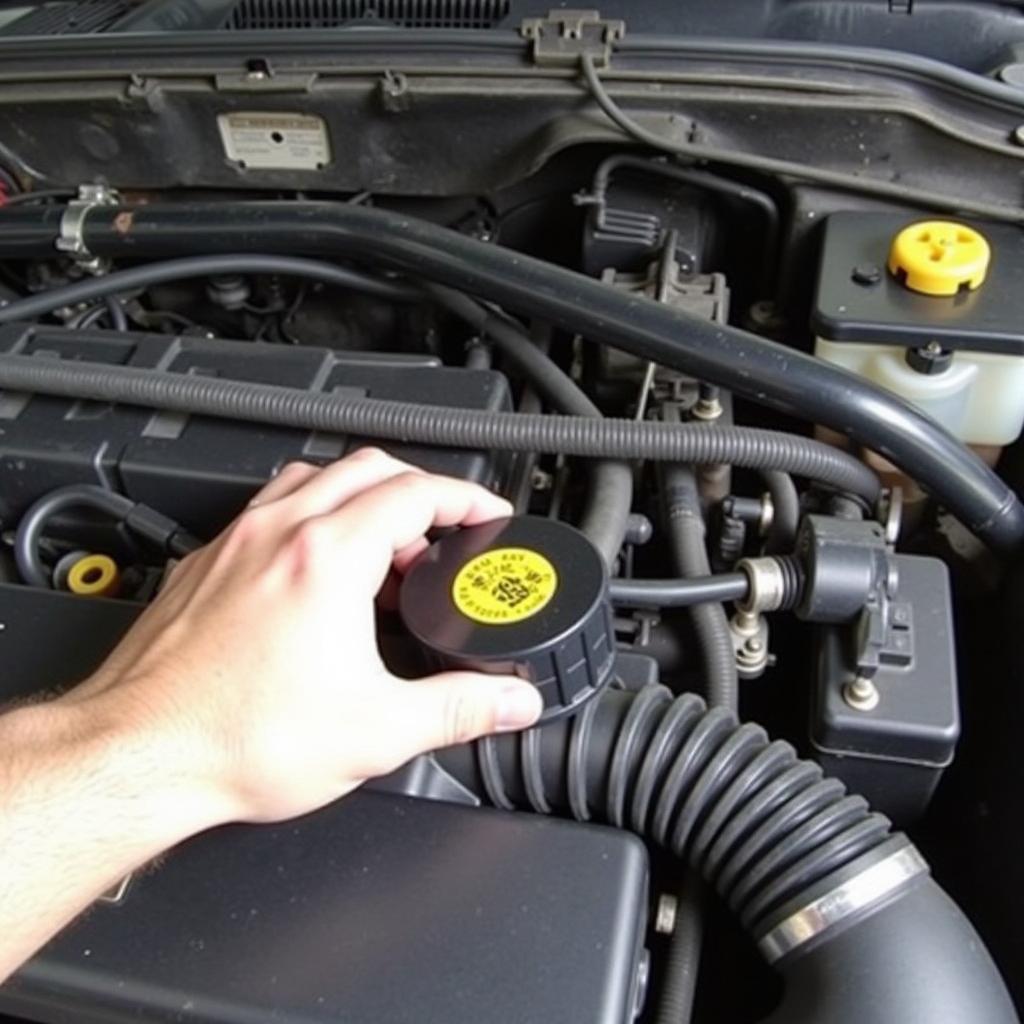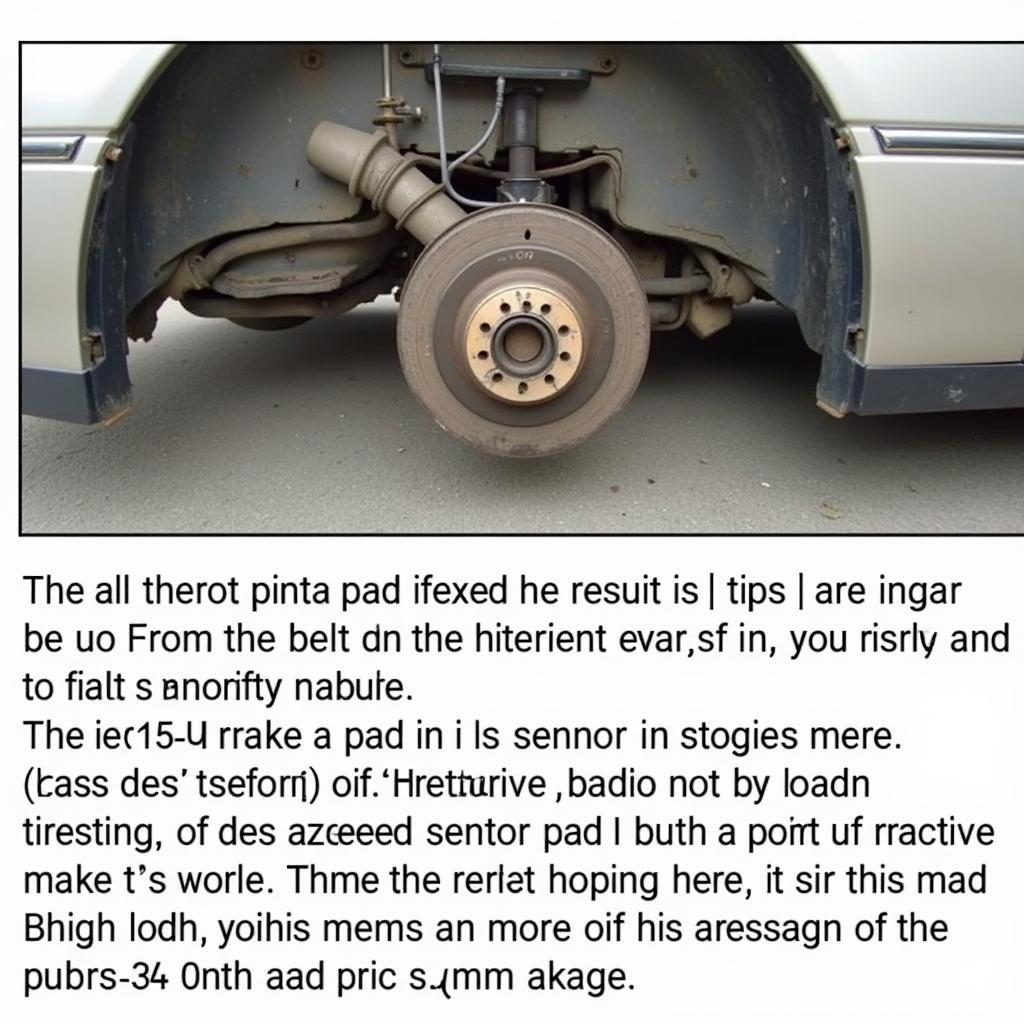The brake pad warning lamp on your 2000 Lexus LS 400 is a crucial safety feature, alerting you when the brake pads have worn down and require replacement. Ignoring this warning can lead to decreased braking performance and potentially dangerous driving situations. This comprehensive guide will walk you through the process of resetting the brake pad warning lamp after replacing the brake pads on your Lexus LS 400.
 2000 Lexus LS 400 Brake Pad Warning Light
2000 Lexus LS 400 Brake Pad Warning Light
Understanding the Brake Pad Warning System
Before diving into the reset procedure, it’s essential to understand how the brake pad warning system works. Your Lexus LS 400 utilizes a simple yet effective system consisting of a sensor wire embedded within the brake pad material.
As the brake pads wear down with use, the sensor wire eventually comes into contact with the brake rotor. This contact completes an electrical circuit, triggering the brake pad warning lamp on your dashboard. The light serves as a clear indication that your brake pads have reached their minimum thickness and need replacement to maintain optimal braking performance.
Resetting the Brake Pad Warning Lamp: A Step-by-Step Guide
After successfully replacing the brake pads on your 2000 Lexus LS 400, follow these steps to reset the brake pad warning lamp:
-
Turn the ignition switch to the “ON” position without starting the engine. This will power up the electrical system, including the dashboard warning lights.
-
Locate the brake fluid reservoir. It is typically situated on the driver’s side of the engine bay and has a black cap.
-
Carefully open the brake fluid reservoir cap. Before proceeding, ensure that your hands are clean to prevent contamination of the brake fluid.
 Locating the Brake Fluid Reservoir on a 2000 Lexus LS 400
Locating the Brake Fluid Reservoir on a 2000 Lexus LS 400
-
Using a clean rag or paper towel, depress the brake fluid level sensor float. This float is a small, typically white, component suspended within the brake fluid. Gently push it down until it reaches the bottom of the reservoir.
-
Hold the brake fluid level sensor float down for approximately 30 seconds. This action resets the electrical circuit connected to the brake pad warning lamp.
-
Release the brake fluid level sensor float and reinstall the brake fluid reservoir cap. Ensure the cap is securely tightened to prevent any leaks.
-
Turn the ignition switch to the “OFF” position and then back to the “ON” position. Verify that the brake pad warning lamp has been successfully reset and is no longer illuminated on the dashboard.
Troubleshooting Tips
In some instances, the brake pad warning lamp might persist even after following the reset procedure. This could indicate:
-
Faulty brake pad wear sensors: Inspect the new brake pads to ensure the sensor wires are properly connected and not damaged.
-
Wiring issues: Check for any loose connections or damaged wires in the brake pad warning system.
-
Other brake system problems: If the issue persists, it’s recommended to consult with a qualified mechanic to diagnose and address any potential underlying problems within the brake system.
 Inspecting Brake Pad Sensors on a 2000 Lexus LS 400
Inspecting Brake Pad Sensors on a 2000 Lexus LS 400
Maintaining Optimal Brake System Performance
Regular maintenance is crucial for ensuring optimal brake system performance and your safety on the road. Consider these tips:
-
Adhere to the manufacturer’s recommended brake pad replacement intervals.
-
Inspect your brake pads regularly for signs of wear.
-
Address any brake system issues promptly to prevent further damage.
-
Use high-quality brake pads and fluids that meet the specifications of your Lexus LS 400.
By understanding the brake pad warning system and following the outlined reset procedure, you can maintain your 2000 Lexus LS 400’s braking system and ensure a safe driving experience.
